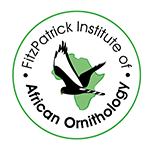Ludwig's Bustard (Neotis ludwigii)
CAR summary data
Habitat and noted behaviour
Sightings per Kilometre
Please note: The below charts indicate the sightings of individuals along routes where the species has occured, and NOT across all routes surveyed through the CAR project.
Regional Status

Global Status


IUCN Data (Global)
IUCN 2024. IUCN Red List of Threatened Species. Version 2024-1 (www)Assessment year: 2025
Assessment Citation
BirdLife International 2025. Neotis ludwigii. The IUCN Red List of Threatened Species 2025: e.T22691910A265043015. Accessed on 10 December 2025.Geographic range:
Neotis ludwigii has a large range centred on the dry biomes of the Karoo and Namib in southern Africa, being found in the extreme south-west of Angola, western Namibia and in much of South Africa (del Hoyo et al. 1996, Anderson 2000), and extending into southwesternmost Botswana. Most of the population resides in South Africa and largely overlaps with the Nama Karoo and Succulent Karoo Biomes (Evans 2023), with some regular movements into winter rainfall areas and returning east in summer (Colyn et al. 2020), but movements can be unpredictable and nomadic. Non-breeding birds occasionally visit Lesotho (Pretorius and Rose 2025). The range is contracting, with a 4.5% reduction in the area of occupancy (AOO) modelled from the Southern African Bird Atlas Project (SABAP2) pentad data between 2015 and 2023 (Lee 2024).Habitats:
This species inhabits open lowland and upland plains with grass and light thornbush, sandy open shrub veld and semi-desert in the arid and semi-arid Namib and Karoo biomes. Recent satellite telemetry and stable isotope data (Shaw 2013, Shaw and Ryan 2015) support earlier work (Allan 1994) that shows Ludwig’s Bustard to be nomadic and a partial migrant, moving to the western winter-rainfall part of its range in winter. In Namibia it is most common in the Namib Desert (west) in winter (May to October) and inland on the escarpment (east) in summer (November to April) (Allan 1994). The breeding season varies across its range, mostly spanning from July-February and can be up to May in Namibia (Collett 1982, Herholdt 1988, Lawson 1993, Allan 1994), with the species nesting on bare ground with a clutch of 2-3 eggs (del Hoyo et al. 1996, Jenkins and Smallie 2009). Chick-rearing is conducted solely by females (Jenkins and Smallie 2009). The diet includes invertebrates, some small vertebrates and vegetable matter, including the berries of Lycium oxycladum. There is strong evidence that the species undergoes movement with rains in pursuit of Orthoptera hatchlings, though vegetation remains important (Allan 1994). Flocks of up to 70 individuals have been recorded (Bridgeford 1988, del Hoyo et al. 1996).Population:
Allan (1994) carried out a census in the 1980s and estimated the entire population at 56,000–81,000 individuals, of which 50–75% were thought to occur in South Africa (Anderson 2000). This however was probably a significant underestimate, and applying distance sampling to this survey increased the estimate to 97,000 (95% CI 75,000–126,000) in South Africa alone (Shaw 2015). The South African population has most recently been estimated at 114,000 birds (95% CI 87,000-148,000) from transect based distance sampling undertaken in 2010-2012 (Shaw et al. 2016). Roughly 50-75% of the global population are thought to occur in South Africa, suggesting a total within a range of 116,000-296,000 individuals, which is placed in a band of 100,000-499,999 individuals. Assuming around two-thirds are mature, the population size is roughly estimated to fall between 70,000-335,000 mature individuals.Threats:
The primary threat to the species is collisions with overhead power lines, with potentially thousands of individuals involved in such collisions each year (del Hoyo et al. 1996, Anderson 2002, Jenkins and Smallie 2009, Jenkins et al. 2009, 2011, Shaw 2013, Shaw et al. 2018). Bustards have limited frontal vision so may not see power lines, even if they are marked (Martin and Shaw 2010). Collision rates have been estimated at 1.12 (95 % CI 0.40– 2.58) and 0.86 (95 % CI 0.30–1.96) bustards/km/year for 400 kV transmission and 22 kV distribution lines respectively: these are the highest recorded for a South African species (Shaw et al. 2018). Effective mitigation measures have not yet been developed (Silva et al. 2023). Given that the extent of power lines in southern Africa is vast and expanding (Jenkins and Smallie 2009, Pretorius and Rose 2025) it is estimated that such collisions alone are already enough to cause a rapid decline (Pretorius and Rose 2025) which may intensify in the future (Jenkins et al. 2011, Pretorius and Rose 2025). The rapid expansion in renewable energy infrastructure also results in the addition of further power lines, but there are also reports of collisions with wind turbines (Pretorius and Rose 2025).Other threats to this species include deliberate hunting, capture in snares set for mammals, poisoning and disturbance, with one satellite-tracked bird likely hunted (Allan 1994, del Hoyo et al. 1996, J. Shaw unpubl. data). Females often desert the nest when disturbed (Allan and Anderson 2010); frequency of human disturbance due to renewable energy developments in the sunny, open habitat of this bustard is likely to increase.
Conservation measures:
Conservation Actions UnderwayRates of collision have been assessed for the different types of power line present within the range (Shaw et al. 2018). Ongoing monitoring of collision mortality is essential for the assessment of impacts and to inform mitigation. GPS tracking of individuals is ongoing to understand the movement ecology of the species (Shaw et al. 2013, Pretorius et al. 2022). The habitat use of the species has been investigated, including assessing the proportion of the population within protected areas (Evans 2023). Monitoring of the species through the CAR survey and SABAP2 continues with further developments in analysis (Lee 2024). In Namibia, NamPower and other utility organisations are working to implement effective mitigation measures (A. Scott and M. Scott in litt. 2010). The species is listed as Endangered in Namibia (Scott et al. 2015), and in South Africa, Lesotho and Eswatini (Shaw 2015, Pretorius and Rose 2025).
A collaboration initiated in 2024 by Bustards Without Borders aims to create a multi-species action plan for bustards that will include conservation action plans for southern African species including Ludwig's Bustard (Pretorious and Rose 2025).
Conservation Actions Proposed
Finding and implementing effective mitigation for bustards is the most important action (Pretorius and Rose 2025). Mitigation measures to address power line collision mortality are being researched by the Endangered Wildlife Trust and Eskom in South Africa.
All new infrastructure (power lines, wind turbines) should be sited and mitigated appropriately, and dangerous sections of line should be retrofitted with appropriate mitigation. Implement the national protected area expansion strategy, which could increase suitable habitat within protected areas from 9% to 24% (Evans 2023). Because bird diverters are largely ineffective for bustards (Shaw et al. 2021) however, routing and design takes on even greater significance for minimising collisions (Silva et al. 2023). Routing of new lines should aim to cluster lines together in corridors, where visibility of a few lines close together, and close to roads if possible, is more likely to cause bustards to avoid them all.
Continue population monitoring and try to expand coverage of transect routes for the CAR. Proactive power line mitigation should be undertaken despite the lack of an effective mitigation measure where areas of line are identified as high risk in collision risk models (Pretorius and Rose 2025). Identify and protect lekking sites, including burying adjacent power lines (Pretorius and Rose 2025).
Continue to raise awareness to stop hunting and to encourage the public to report mortality from power lines, etc.
Research to learn more about key life history parameters for this long-lived bird is also crucial to facilitate more accurate assessment of the impacts of unnatural mortality, and to create a population viability assessment (Pretorius and Rose 2025).
The impact of wind turbine collisions and of solar photovoltaic developments should be formally researched to add to current evidence from post-construction monitoring (Pretorius and Rose 2025).
Extend research currently underway in South Africa to Namibia (J. Shaw in litt. 2012), and repeat census in 5-10 years (J. Shaw in litt. 2016).
Rationale:
This species is classified as Endangered as the current rapid rate of population decline is suspected to increase in the future. Declines appear to be due to very high rates of collision mortality, and while there are plans for the rapid and widespread expansion of energy infrastructure and associated power lines within its range, successful mitigation measures to prevent bustard mortality have not yet been found.Trend justification:
Deriving population trends is challenging due to the nomadic nature of the species, but declines are apparent from multiple data sources. Data from the Coordinated Avifaunal Roadcount (CAR) indicate an annual reduction in the probability of recording the species on a transect of 1.3 %, equivalent to a 33.3 % reduction over a three generation period (Lee 2024). CAR routes cover less than one-third of the range of the species, and are concentrated in parts of the range where the species densities are lower than average (Evans 2023).A separate, unpublished road transect dataset spanning 2009 to 2024 indicates an alarming decline of 72-90 % (S. Z. Castañeda in litt. 2024, per A. Lee in litt. 2025): but the consistency and representativeness of the sampling effort in relation to the species' range has not been assessed.
These data cover only a small proportion of the species' range. The great concern is the exceptionally high recorded collision rates with power lines (Shaw et al. 2018), which have not yet been effectively mitigated (Silva et al. 2023) even as the power line network is expanding. Corrected for survey biases, Shaw et al. (2018) estimated Ludwig’s Bustard collision rates at 1.12 (95% CI 0.40– 2.58) and 0.86 (95 % CI 0.30–1.96) bustards/km/year for 400 kV transmission and 22 kV distribution lines respectively. There is the potential for such high mortality rates to drive uneven declines across the range, and on the current understanding of the numbers involved it is plausible that declines rates may become considerably more rapid than recorded by the CAR data to date. Efforts to predict the likely impact on the population have indicated that rates of decline are likely to be very rapid, over 50 % over three generations within South Africa (Jenkins et al. 2011, Shaw 2015). There is clear reason to believe this prediction remains valid, noting that when made there was no clear indication of rapid declines as is now evident from the CAR dataset.
Accordingly, the overall future rate of population reduction is suspected to fall between 33 % and 55 % over the next three generations. The wide margin reflects uncertainty; even higher rates recently reported are suspected to be overestimates of the rate, but the level of threat from collisions with energy infrastructure is believed to be severe and capable of driving very rapid population declines.
 Login
Login


